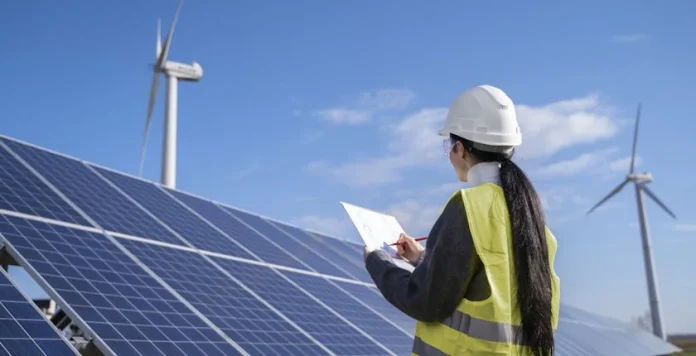Wind and solar power accounted for 38.4 per cent of China’s total installed capacity in the first half of the year, becoming the first time renewables overtook coal, according to bne IntelliNews.
Power from wind and solar overtook coal capacity, which fell to 38.1 per cent, according to a report by the China Electricity Council (CEC). China has thus become the global leader in green power generation, surpassing any other country in the world.
It is now expected to add about 300 GW of solar and wind capacity this year, slightly more than the 293 GW added the previous year. The CEC report predicts that by the end of the year, total grid-connected wind and solar capacity will reach 1,350 GW, accounting for more than 40 per cent of the country’s total installed capacity.
This growth in renewable energy capacity is expected to increase the total installed capacity of non-fossil energy sources, including nuclear and hydropower, to 1,900 GW by the end of 2024. This would represent 57.5 per cent of the total energy mix, up from 53.9 per cent in 2023.
Controlling coal consumption
China, the world’s largest emitter of greenhouse gases (GHGs) and consumer of electricity, aims to derive 80 per cent of its energy mix from non-fossil fuel sources by 2060. Meanwhile, coal-fired power capacity fell to 1,170 GW, accounting for 38.1 per cent of a total figure at the end of June. The share of coal, the dirtiest fossil fuel, in China’s energy mix is expected to fall below 37% by the end of the year.
However, coal accounted for nearly two-thirds of China’s electricity supply in 2023, highlighting the continued dominance of coal in the country’s energy mix, despite the growth of renewable energy capacity.
In 2021, Chinese President Xi Jinping stated that China would “strictly control coal consumption” by 2025 and begin to “phase down coal consumption” from 2026, signalling the country’s long-term commitment to reducing its dependence on fossil fuels.
Paris Agreement
Meanwhile, the US, China’s main geopolitical opponent, is showing the opposite trend on green energy. Back in 2020, Washington withdrew from the Paris climate agreement a year after officially notifying the UN of its desire to renege on its commitments under the treaty.
In June 2017, US President Donald Trump announced his decision to withdraw from the agreement, which the country joined in 2016. The administration claimed that the treaty redistributed American wealth in favour of other countries, and the implementation of the treaty’s provisions could result in the loss of 2.7 million jobs for the United States by 2025.
The Paris Agreement was adopted on 12 December 2015, following the 21st Session of the Conference of the Parties (COP21). Member countries agreed to prevent the average global temperature from rising by more than two degrees Celsius above pre-industrial levels by 2100. The agreement also calls for a reduction in greenhouse gas emissions.
